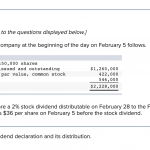
If you added a payment to a deposit by mistake, you can remove that payment easily by clicking on the deposit or amount field in the deposit entry line in the Deposit Detail report. It will take you to the bank deposit screen where you can uncheck the checkbox for the payment you wish to remove, and then click Save and close. Record the payment received from your customer and place it into the Undeposited Funds account. Use the Receive payment form when your customer pays you for an invoice and the Sales receipt form when you receive immediate payments. Ensuring timely deposits of undeposited funds in Quickbooks aligns with established financial regulations, enhances adherence to financial procedures, and maintains compliance with financial standards within the system. Then, carefully review and select the payments that need to be included in the deposit.

How to Set Up Undeposited Funds in Quickbooks Online?
It’s crucial to maintain consistency in updating and clearing undeposited funds to avoid discrepancies and errors in financial reporting, thereby upholding the integrity of the accounting system. By meticulously cross-referencing the deposited amounts with the corresponding invoices and payments, businesses can gain a comprehensive understanding of their financial transactions. This process facilitates the identification of any discrepancies or outstanding payments, contributing to a more streamlined and transparent financial record.
When reviewing your transactions, it’s ecommerce accountant easier to spot discrepancies and missing deposits since your QuickBooks records align with the combined deposits on your bank statement. When you receive cash and check payments from customers, you first place them into the Undeposited Funds account instead of directly depositing them in your actual bank account. When all checks and cash payments are entered and you’re ready to deposit them, you can take them out of the Undeposited Funds account and make a single deposit in your bank account.
Check for Duplicate Transactions
Once you provide all the required details, click Save or Save and send on the lower part of the screen. By incorporating this approach, businesses can demonstrate their commitment to financial transparency and accountability, thereby instilling trust and confidence in their financial operations. Accurate categorization facilitates the reconciliation process, simplifying the identification of any discrepancies and contributing to overall financial transparency and compliance. It enhances transparency and accountability in financial management, contributing to overall business stability and growth. These differences can significantly influence how businesses monitor their cash position and make informed financial decisions using the respective platforms.
How to use QuickBooks Online’s Undeposited Funds account
Fixing undeposited funds in QuickBooks Online requires a systematic approach to identify and resolve any discrepancies or issues related to pending payments and deposits. Undeposited funds in QuickBooks Online refer to payments received by a company that have not yet been deposited into the bank account. Reconciliation is done when you move undeposited funds in QuickBooks to your actual bank account. The Undeposited Funds account in QuickBooks Online is a holding account where you temporarily record customer payments before grouping and depositing them as a lump sum into your bank account.
Reconciling undeposited funds in QuickBooks Online is crucial for ensuring accuracy in financial records and maintaining a clear trail of transactions from payment receipt to bank deposit. It plays a vital role in maintaining the integrity of financial reconciliation and effective record keeping. This level of attention to detail ensures that all deposits are accurately reflected in the undeposited funds account. It is vital to record each deposit promptly and precisely to avoid discrepancies. Proper documentation, such as deposit slips and receipts, helps in maintaining a clear trail of transactions. Undeposited funds in QuickBooks Online can sometimes be a source of confusion for users, but reconciling them is crucial for maintaining accurate financial records.
- This crucial process requires an in-depth review of financial records, such as bank statements, receipts, and transaction logs, to pinpoint discrepancies or omissions.
- Accurate record-keeping is essential to ensure that the deletions are properly accounted for in financial reports and compliant with regulatory requirements.
- Some accountants or bookkeepers who don’t understand the full functionality of QuickBooks Online might try to fix incorrect balances in the Undeposited Funds account with a journal entry.
- Once you provide all the required details, click Save or Save and send on the lower part of the screen.
Suppose we recently received an upfront payment of $150 in cash from Robert Allard for an A/C repair service. When you immediately receive a cash or irs form 2553 instructions a check for a sales transaction without having created an invoice, then you must use the Sales receipt form to record the check and revenue. Once done, click Save and close, and your received payment will automatically be reflected in the Undeposited Funds account.
You can then review your deposit to see if the amount recorded matches the total fund deposited. This feature allows businesses to accurately track the flow of funds, ensuring that all incoming payments are accounted for and allocated appropriately. By consolidating funds before they are deposited into the bank, it enhances operational efficiency by streamlining the reconciliations process. This capability strengthens financial insight, enabling businesses to have a clear overview of their cash flow and make well-informed decisions. This can have a significant impact on a small business’s ability to track and manage its cash flow accurately.
Do I need to set up an Undeposited Funds account?
Failing to record all deposits can result in what is a full charge bookkeeper misstated financial records and inaccurate bank balances. This can lead to confusion and inefficiencies during the reconciliation process, causing potential errors in bookkeeping and financial reporting. By thoroughly examining the undeposited funds account, you can identify any discrepancies or mismatches between the deposits and customer payments, which is crucial in maintaining financial accuracy within the system. Ensuring that all funds are correctly allocated plays a critical role in accurate financial reporting and preventing errors down the line. These funds serve as a temporary holding account and allow for grouping multiple payments together before depositing them into the designated bank account. This process streamlines the bank reconciliation process and ensures that the company’s financial records accurately reflect the transactions.
This proactive approach also enhances the overall accuracy and reliability of financial reports, providing a solid foundation for informed decision-making and financial planning. It starts with reviewing the undeposited funds account to identify any transactions that need to be cleared. Once the deposits are created, you can match them with the actual bank deposits to ensure all transactions are accurately reflected. Be sure to verify that the funds have been correctly allocated before finalizing the clearing process in QuickBooks Desktop. This step cements the accuracy and completeness of the reconciliation process. This process involves a thorough review of all transactions to pinpoint any discrepancies or errors, followed by making the necessary journal entries to rectify them.